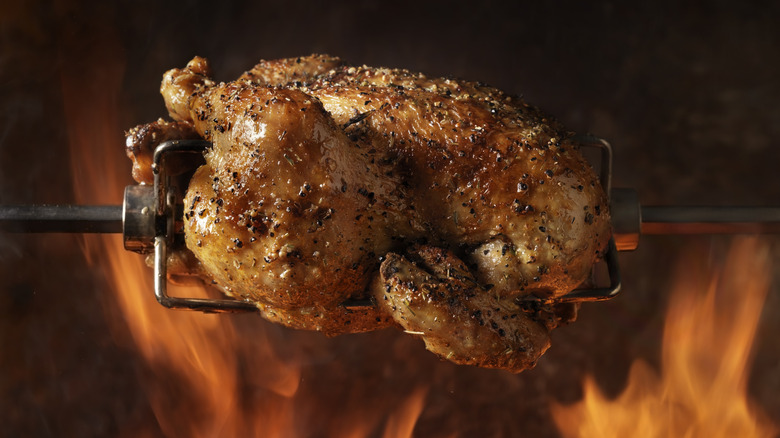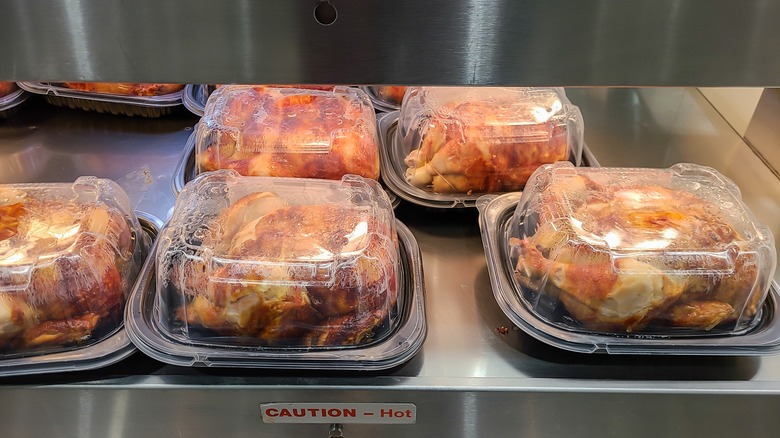The Red Flag To Watch Out For When Buying Rotisserie Chicken
CORRECTION 9/24/24: A previous version of this article stated all rotisserie chicken with extra liquid at the bottom is going to be dry. This can be the case, but the excess liquid can also indicate a juicy chicken.
When it comes to ready-made food at the supermarket, it's hard to find something better than a good rotisserie chicken. It's hot and (hopefully) fresh, comes in a few flavors if you're lucky, is often more affordable, and provides enough protein to feed a crowd or to meal plan for a few days.
But rotisserie chickens aren't created equal, and the last thing you want to see when you get home is a sad, small chicken that tastes like it was spit-roasted last week. Thankfully there are several tips to help you pick out the best, with one red flag that is ridiculously easy to spot beyond the date on the packaging: the weight. Simply pick up the tasiest looking birds cooked on the same day and compare how heavy they are. The lighter the bird, the drier it is likely to be.
Why are heavy rotisserie chickens juicier?
Assuming all the rotisserie chickens were roughly the same weight before they were cooked, any that are significantly lighter are most likely less juicy than their heavier brothers and sisters. This is due to the fact that more and more of the liquid evaporates the longer each chicken sits under a heat lamp; and of course, less liquid equals drier meat. While it's also possible to judge this by how much liquid is sitting at the bottom of your container, we would caution against using this method alone. It's possible a rotisserie chicken with a ton of liquid at the bottom has drained out, but equally possible the chicken is just ridiculously juicy.
One word of caution though: the method of choosing a chicken by its weight can be a double-edged sword. Check to see if your market sells rotisserie chicken by the pound or at a flat price per container. It is very likley the package will be marked with the cost already if it's by the pound (usually this is on the label near the barcode), but it's always worth checking a few containers if the pricing structure isn't clearly indicated. If the price is per pound and you don't realize, you may be in for a shock at checkout when you find out you chose a bird that costs twice as much as the one you were weighing it against. A delicious, juicy bird, but an expensive one none the less.

